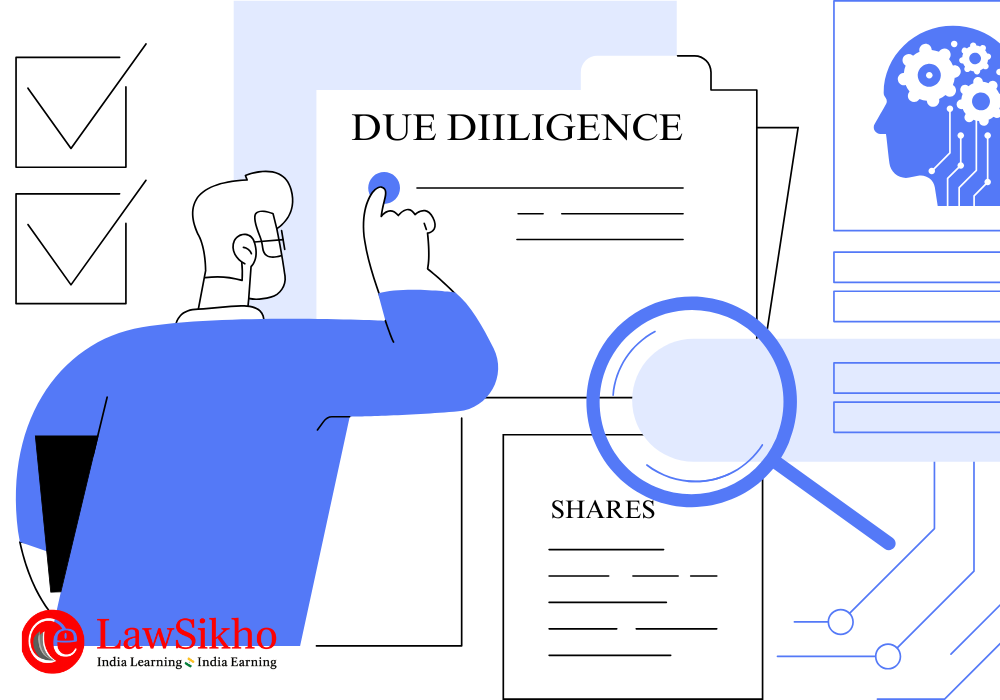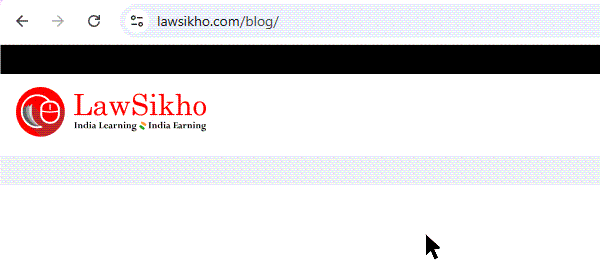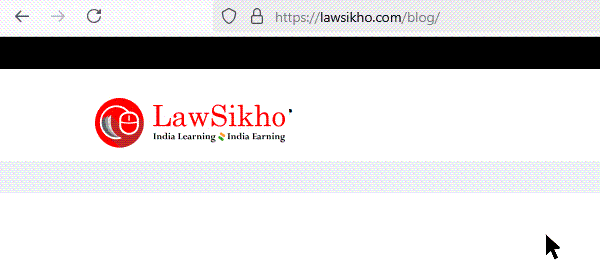Discover how to use AI tools like ChatGPT to build a document-specific due diligence checklist for converting preference shares into equity. Learn how to prompt AI for clause-level analysis of your Articles of Association and Share Subscription Agreements—far beyond generic section 55 summaries.
Table of Contents
Introduction
Most lawyers I know are using AI wrong.
For instance, if they are trying to create a checklist for converting preference shares into equity shares.
They ask ChatGPT generic questions like “How do I convert preference shares to equity?” and get generic law school outlines.
Then they complain that “AI does not understand the complexities of preference share conversions” or “it is just giving me textbook responses about the Companies Act.”
Here is what they are missing.
AI is not supposed to replace your legal knowledge on how to convert the Compulsorily Convertible Preference Shares (CCPS) into equity shares. Its real value is helping you systematically analyse your specific Articles of Association and Share Subscription Agreement to build a practical due diligence checklist.
Last month, I had to handle a complex CCPS conversion for a client.
Instead of spending hours manually cross-referencing the AoA provisions with the SSA conversion terms, I decided to test whether AI could actually help build a conversion checklist.
The experiment worked.
But only after I learned how to prompt it correctly for CCPS analysis.
Most people start with questions like “What is the process for converting preference shares?” That gets you a generic Companies Act outline about section 55 and Rule 9.
Useless for your actual conversion transaction.
The breakthrough came when I stopped asking AI for general CCPS conversion advice and started asking it to analyse my specific company documents to identify conversion gaps and build actionable checklists.
Today, I am going to show you exactly how I did it.
We will use real documents – publicly available Articles of Association from Unilever PLC and a Share Subscription Agreement from Jana Small Finance Bank – to demonstrate how to build a document-specific CCPS conversion checklist instead of relying on generic legal guidance.
You will see the prompts I used, mistakes I made, and most importantly, how to make AI work like your most thorough junior associate for preference share conversion analysis instead of a legal chatbot.
Ready to see the difference?
Important Note: AI tools can give different answers to the same question. The responses I show here are examples from my tests – yours might be different, but the technique will still work.
Why don’t generic AI prompts work for CCPS conversions
Like I said, most lawyers ask generic questions when they first try AI for legal work.
As a result, they get generic answers. Here is the exact generic prompt I used when I was using AI to help me in CCPS conversion for a client:
“Act as a corporate lawyer. Prepare a step-by-step legal and compliance checklist for converting preference shares into equity under the Companies Act, 2013 and applicable rules.”
Sounds reasonable, right?
I am asking for a systematic checklist from an AI that is supposed to know corporate law.
Here is what ChatGPT gave me: [Link to ChatGPT response]
The response looks comprehensive at first glance.
It covers all the statutory requirements, references the right sections of the Companies Act, and follows a logical sequence from board approval to ROC filings.
So what is the problem?
This checklist is completely useless for actual legal work. Here’s why:
It tells me to “Check AOA” but does not tell me what specific clauses to look for.
It says “Review terms of issue,” but it does not help me identify what is missing or problematic. It mentions “Pass Special Resolution if required” but does not tell me how to determine if it is actually required for my specific situation.
This is like asking for directions and getting “go north until you see a building.” Technically correct, useless in practical terms.
The real problem
The AI gave me a law school outline, not a practical work tool.
It is telling me what steps exist in theory, not what to do with the actual documents on my desk.
Every item on this checklist requires me to do the same amount of legal analysis I would do without AI.
I still need to manually review the AOA, analyse the SSA terms, and figure out compliance requirements.
AI just became an expensive way to generate the same checklist I could have pulled from a legal database.
The insight that changes everything
So, I tried to do a little experiment.
Instead of asking AI what to do in general, I asked it to analyse my specific documents for specific issues.
The difference was massive. And I am about to show you exactly how to make that switch.
Creating document-specific due diligence checklists with AI
Before I share the right way, I want to tell you the second mistake most lawyers make with AI – they ask the same generic questions even when they have specific documents sitting right there.
Think about it.
You have the company’s actual Articles of Association and Share Subscription Agreement.
Why are you asking AI to give you theoretical advice about “what to look for” when you could be asking it to analyse what is actually there?
The smart approach: Document-specific prompting
I am going to upload two documents and ask AI to create a practical checklist based on what it actually finds in them.
Now, here is something important – I am using the Unilever AoA (UK company) and Jana Small Finance Bank SSA (Indian bank) for this demonstration. These are not from the same company, obviously.
So, I am going to tell ChatGPT upfront that these are being used for educational purposes and to treat them as if they are from the same company.
Why?
Otherwise, ChatGPT will spend time pointing out jurisdictional differences and document mismatches instead of focusing on the conversion analysis technique I want to demonstrate.
This is actually a crucial prompting skill – being explicit about context so AI gives you the type of analysis you need rather than getting sidetracked by obvious inconsistencies.
The specific prompt
Here is the specific prompt I gave to ChatGPT:
“I am uploading a company’s Articles of Association and Share Subscription Agreement. For the purpose of this educational exercise, please treat these as documents from the same company. I need you to create a practical CCPS conversion checklist based on what you actually find in these specific documents.
Rather than giving me theoretical advice, analyse these actual documents and tell me:
- What conversion provisions currently exist
- What specific gaps need to be addressed
- What exact clauses need to be added or amended
- What compliance steps are required based on the terms you find
Create a document-specific action plan, not a generic legal guide.”
Result: Document-specific vs Generic AI analysis
Here is what ChatGPT gave me when I uploaded the actual documents: [Link to ChatGPT response with documents]
You can have a look at what happened when ChatGPT analysed real documents instead of giving generic advice:
Generic response: “Check AOA: Confirm that the Articles of Association permit such conversion.”
Document-specific response: “AoA does not contain enabling provisions for: conversion of CCPS into equity shares, terms and conditions of conversion, recognising Basel III or regulatory triggers.” Then it gives me the exact clauses I need to add.
See the difference?
One tells me what to check. The other tells me what is missing and how to fix it.
More concrete examples:
Generic: “Review the terms of issue of preference shares to confirm timing, ratio, and conditions.”
Document-specific: “Voluntary Conversion: Investor can convert CCPS at any time after April 1, 2023. Price = lower of merchant banker valuation or ₹3000 crore. Mandatory triggers: IPO filing date minus 1 day, August 31, 2029, CET1 ratio breach.“
Generic: “File Form FC-GPR if foreign investors are involved.”
Document-specific: “File FC-GPR if investor is non-resident”
What just happened?
ChatGPT transformed from a legal textbook into a document analysis tool. Instead of telling me what steps exist in theory, it is telling me:
- What provisions already exist in my documents
- What’s missing and needs to be added
- Specific language I can use for amendments
- Exact compliance steps based on the terms it found
This is actionable legal work, not academic theory.
This is how you make AI work like your most thorough junior associate instead of a chatbot reading from a legal textbook.
Lesson: AI works best with specifics
This demonstrates the fundamental difference between lawyers who get value from AI and those who do not.
Successful lawyers do not ask AI for generic legal advice.
They give AI-specific documents to analyse for specific problems.
They understand that AI’s strength is not in knowing the law – it is in systematically analysing what is actually in front of you.
What you just learned: In two simple steps, you have seen how to transform AI from a legal chatbot into a practical document analysis tool:
- Recognise why generic prompts fail – they produce theoretical guidance, not practical solutions
- Use document-specific prompts – upload actual documents and ask for specific analysis
- Get actionable results – receive specific findings, gaps, and ready-to-use solutions
The broader application: This approach works for any legal document analysis.
- Contract reviews: Upload contracts, ask for specific clause analysis
- Compliance audits: Upload policies, ask for gap analysis against specific regulations
- Due diligence: Upload target company documents, ask for specific risk identification
The key is always the same: Give AI something concrete to analyse rather than asking for abstract legal guidance.
Your next step: Try this technique on your next CCPS conversion. Upload your actual AoA and SSA to ChatGPT, and ask for specific analysis rather than general advice. You will be surprised how much more useful the results become.
AI will not replace legal judgment, but it can dramatically improve how quickly and systematically you analyse documents for preference share conversions. The lawyers who master document-specific AI prompting will not just work faster – they will deliver more thorough CCPS analysis from day one.
Want to see this technique in action for a complete CCPS conversion?
This article focused on the prompting technique for building due diligence checklists. For a comprehensive walkthrough of using AI for the entire CCPS conversion process – from document analysis to board resolutions to ROC filings – check out my detailed guides:
- How to convert preference shares into equity shares using AI: A step-by-step guide
- How to convert preference shares into equity shares using AI: Part 2
These articles show the complete 6-step AI workflow using the same document-specific approach demonstrated here.
FREQUENTLY ASKED QUESTIONS
1. How can AI help in due diligence for converting preference shares into equity shares?
AI tools like ChatGPT can analyze company-specific documents such as the Articles of Association (AoA) and Share Subscription Agreements (SSA) to identify conversion clauses, compliance gaps, and missing provisions. This enables lawyers to build precise, document-specific due diligence checklists tailored to the actual terms of the transaction, rather than relying on generic legal guidance.
2. Why are generic AI prompts ineffective for CCPS conversion analysis?
Generic prompts like “How to convert preference shares to equity?” typically return textbook answers summarizing section 55 and Rule 9 of the Companies Act. These fail to address the real-world specifics of the company’s governing documents. AI becomes effective only when prompted with actual documents and asked to analyze them in context.
3. What is the correct way to prompt AI for preference share conversion due diligence?
The most effective approach is to upload your company’s AoA and SSA and use a prompt that instructs AI to:
(1) identify existing conversion provisions,
(2) highlight gaps,
(3) suggest clause amendments, and
(4) build a document-specific compliance checklist.
This transforms AI into a junior associate-level analyst rather than a basic legal chatbot.
4. Can AI identify regulatory and RBI-related compliance triggers in conversion documents?
Yes. When provided with the relevant documents, AI can flag compliance triggers such as RBI approval thresholds, Basel III provisions, or non-resident investor implications, like the need to file Form FC-GPR. This level of detail is only possible through clause-level document analysis, not general statutory summaries.
5. What are the broader applications of document-specific AI prompting in legal work?
Beyond preference share conversions, document-specific AI prompting can be applied to contract reviews, regulatory compliance audits, and M&A due diligence. Uploading actual policies or agreements and asking AI to analyze for specific risks or compliance gaps enables faster, more thorough legal analysis across practice areas.






 Allow notifications
Allow notifications
